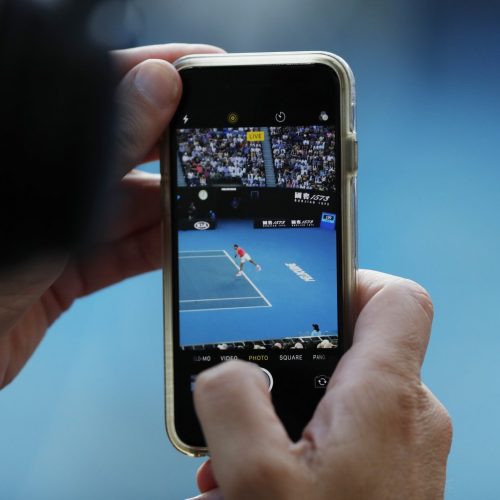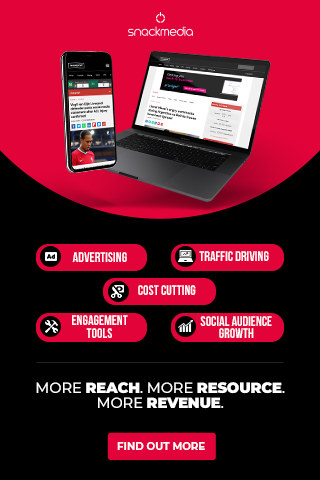A guide to stadium technology at the 2016 EUROs Part Deux
In the second part of a two-part blog about UEFA EURO 2016, Marie Binet, Head of Insight at Stadia Solutions, looks at the role stadium connectivity will have in this summer’s action.
With mobile network provider, Orange, as a main sponsor, connectivity was set down as a priority for the tournament. As a result, 4G will be available in all stadiums, regardless of which network provider fans have. Network providers have been working collaboratively across the 10 stadiums with one lead operator per venue with responsibility for installing the hardware. All providers are then responsible for connecting their own networks. French mobile operator, SFR, has taken the lead at Marseille, Nice and Lille, Bouygues Telecom is responsible for Parc des Princes in Paris and Orange is heading up the rest – Lens, Bordeaux, Saint-Denis, Saint-Etienne, Lyon and Toulouse.
4G
Parc des Princes in Paris has been equipped with 40 individual antenna to provide the 4G network, which breaks down as one antenna per 1,500 fans (60,000 capacity). At each of the other stadiums 35 antenna have been installed. The 4G coverage will also include a zone around the stadium as well as the pitch, which will be beneficial for other events such as festivals and music concerts.
The installation is permanent, so 4G will then be available for regular season matches in Ligue 1 or music events. However, 4G does carry its limitations, especially for overseas fans without international phone plans or planning to avoid data roaming charges.
These DAS (Distributed Antenna System) 4G deployments will most certainly deliver a vast improvement to the cellular connectivity in and around the stadiums, but are unlikely to be the panacea for the demand for data to deliver a totally engaging experience.
Anyone who has tried to stream video or use other data-rich services in marquee venues like Wembley, where they have significantly bigger DAS deployments, will have witnessed this. For a truly immersive experience there is no substitute for the density of coverage and capacity that an HD WiFi solution, combined with 4G DAS, can provide.
WiFi
Although UEFA had intended EURO 2016 stadiums to be fully WiFi-enabled in time for the action this summer, cost implications have prevented this from becoming reality.
As a result, just four stadiums will be offering WiFi connectivity: Lyon, Bordeaux, Nice and the Stade de France in Paris. The Parc des Prince is also claiming to have upgraded the stadium with WiFi in time for the tournament, but, so far, the installation doesn’t seem to work. Fans on Twitter says they can’t connect at the venue and PSG fans complain that the stadium has long been a connectivity black-spot – not only for WIFI, but also 3G and 4G. It will be interesting to see if the additional 4G antenna make a difference.
In Lyon the WiFi has been built in partnership with Orange, with 500 access points allowing 20,000 simultaneous connections. In Nice, there will be 467 access points, covering the outside forecourt, lounges and terraces. The Stade de France is equipped with a full HD WiFi with 1,070 access points including 700 in the bowl. In theory, this is claimed to allow 20,000 simultaneous connections (providing the radio frequency planning has been done well…with wireless technologies ‘more’ is not always best). Marseille does have WiFi access, but only in its corporate VIP areas, adding to the experience for those guests only.
WiFi will also feature in the Fan Parks. Orange will install 680 access points in these, including 270 for the largest at the Champ de Mars in Paris, claiming to allow for 110,000 simultaneous connections. This will be removed after the tournament ends.
New apps
Lyon has launched an app called Parc OL. It is available free of charge and currently has 10,000 downloads on the Play Store. Fans will also be able to order merchandise and food from their seats through the new app, this is in addition to live video and exclusive fan access to video replay, slow motion and replays of referee decisions. Live content and replays will only be available within the stadium to protect TV rights, and won’t be available to staff on the bench.
However, the Parc OL app won’t be available for the Euros. I have also read a comments from fans saying the food and drink ordering was not up to speed yet, as well as the replay access. So it seems this is still more of a beta version of a connected stadium.
UEFA recently launched its Euro 2016 Fan Guide app, mainly aimed at providing tournament and host city information. It will provide team information through a live MatchCentre and is promising video and audio. With only 2,255 reviews in the Play Store and scores of 4.3/5, we will need to wait closer to the tournament for more feedback.
Video replays
The growth of connectivity within stadiums has led to some controversy around video replays and referee decisions, but this has been somewhat appeased by the fact that access is only available to fans connected to the WiFi. Currently only Lyon, Nice and Bordeaux potentially have WiFi of sufficient density and capacity to offer this, providing a multicast solution is enabled. However, it’s unlikely that stadiums offering 4G will have sufficient bandwidth and capacity to deliver live video feeds to a significant amount of the audience.
Looking ahead, UEFA’s WIFI ambitions will be more achievable in 2020, as there won’t be a single host country but a variety of host cities across Europe. This will allow UEFA the flexibility to host matches in the best-equipped and most connected stadiums that Europe has to offer.
About author
You might also like
Mallory Group Launches White Paper on the ‘New Normal’ for Sports Rights Holders
Sport is proving to be one of the high-profile business casualties of the Covid-19 pandemic. However, its slow and structured return will be a key factor in life entering the
The seven essentials for achieving successful sports branding
By Daniela McVicker When it comes to sports, great branding is a must. Your brand influences how people see your company or team. It helps you to forge connections with
Live Chat: A New Social Experience in Sports
Article written by John S. Kim, CEO and co-founder of global API company SendBird Social media rose to prominence throughout the world due to its potential for connection. Social channels provided the








